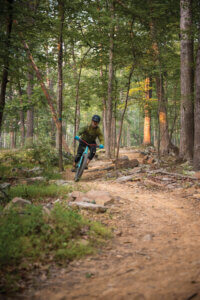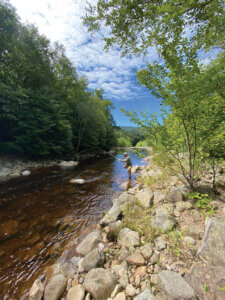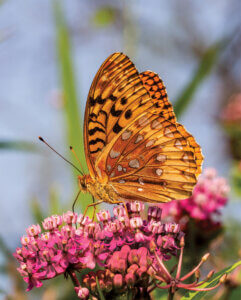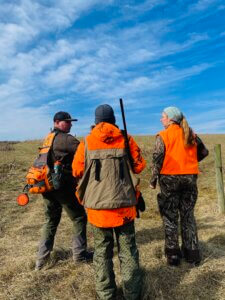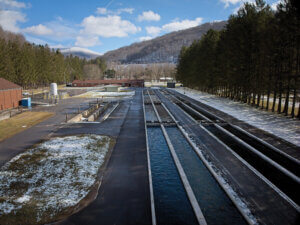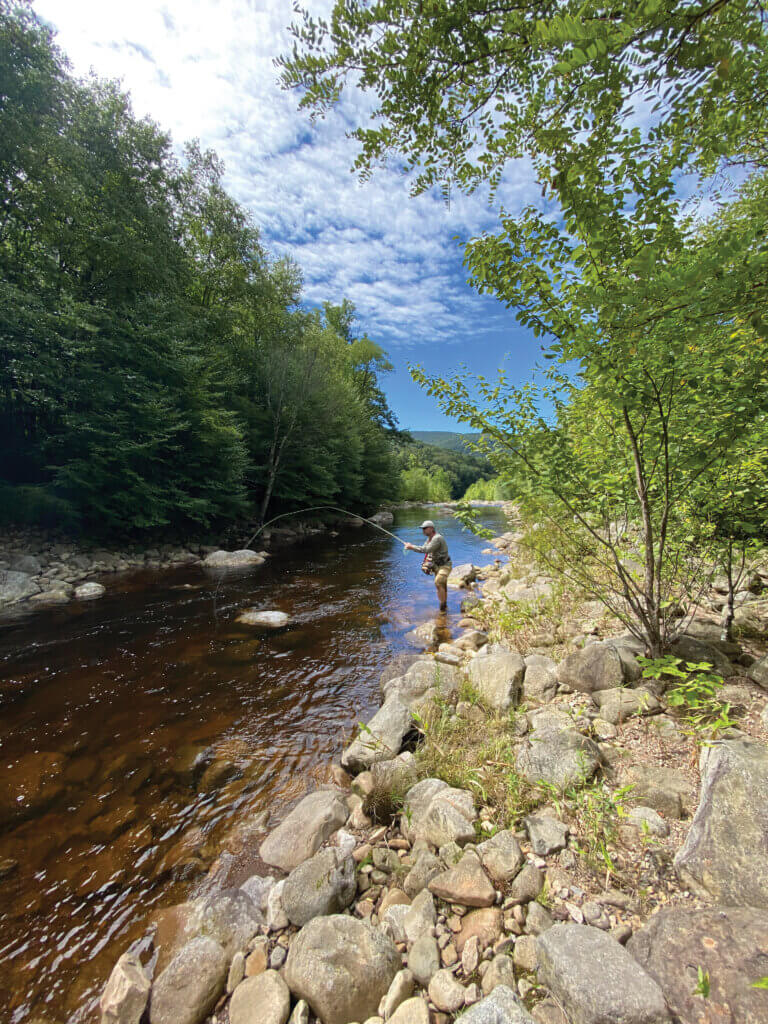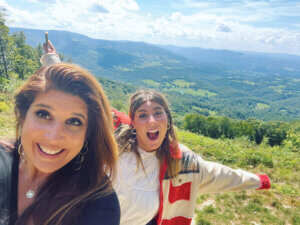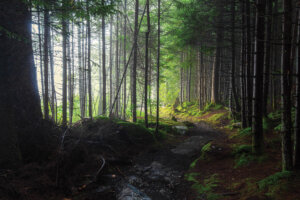
This story was originally published in the June 2023 issue of Wonderful West Virginia. To subscribe, visit wonderfulwv.com.
Written by Wendy Holdren
Snorkeling in West Virginia rivers provides a fresh perspective.
When you think of snorkeling, you probably picture tropical beaches and colorful reefs. But what a lot of West Virginians don’t know is that they can get an up close and personal view of some of the world’s most diverse aquatic life right in our own backyard.
“What’s especially unique to the Mountain State is clean, clear river water, which provides a really unique opportunity for snorkeling,” explains Chad Landress, a forest fisheries biologist with the Monongahela National Forest. “We think about the three A’s as biodiversity hotspots: the Amazon, Africa, and the Appalachian Mountains. There are more mussel and crayfish species in the Eastern U.S. than any other place on the planet. We have close to 180 species of fish in West Virginia, about 90 of which are found in the Mon National Forest.”
With just a mask and a snorkel, river explorers can peer into underwater worlds to see critters in their natural habitats: otters swimming to catch their dinner, maybe, or two crayfish locked in battle, or the hellbender, the largest salamander in the Western Hemisphere.




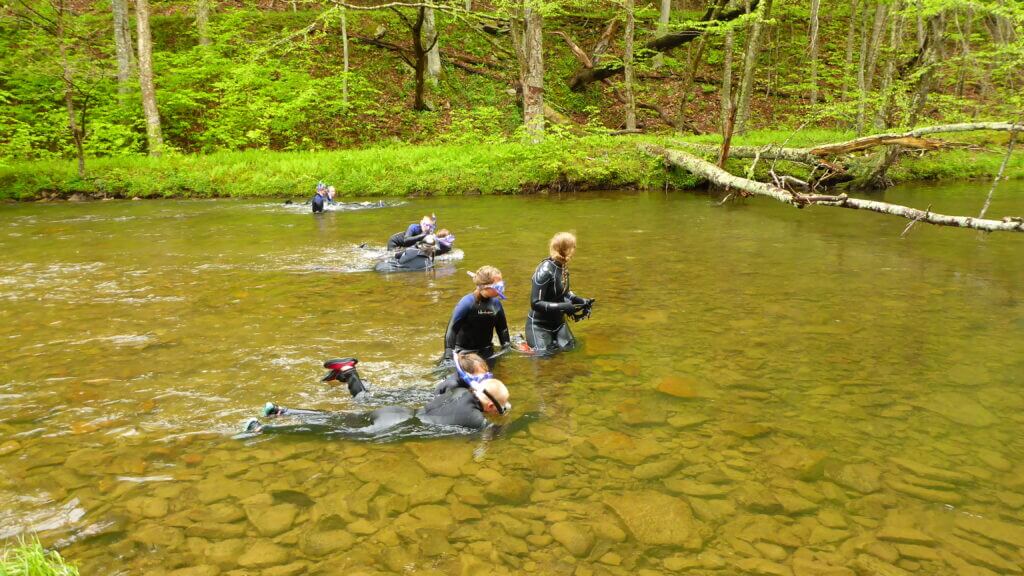
Welcoming to all ages and ability levels, snorkeling makes for a direct and memorable lesson in the importance of taking care of our streams—and in how connected we all are. “In West Virginia, our rivers flow east to D.C. or west to New Orleans,” Landress says. “What better way to connect people and those rivers than to immerse yourself?”
Dipping His Toes in the Water
Now in his 10th year with the Mon National Forest, Landress is involved with many projects related to improving the resilience and health of watersheds, which relates directly to the health of the aquatic ecosystems. “The snorkeling project has been a labor of love,” he says. “It wasn’t in my original job description.”
When he was growing up, Landress was drawn to rivers, especially fishing along the banks with friends and family. With the freedom of his driver’s license, he explored new locations and clearer streams atop the mountains. He toyed around with a snorkel in a friend’s swimming pool, but he wondered: What could he see if he used it beneath the river’s surface?
As Landress worked in other locations across the country, his curiosity about rivers’ underwater ecosystems was put on hold due to the conditions, as some of the Western waters were too muddy or cold for exploration. But when he began his position at Monongahela National Forest, he quickly realized conditions were optimal for a snorkeling program.


The program began in earnest on the Monongahela River in 2015. During that first year, Landress remembers taking fifth grade students from Petersburg Elementary on a snorkeling excursion. He had already scoped out a pool in the stream, so he knew the grade schoolers would be able to see roughly 20 large trout that gathered there.
“We got them to put their faces underwater and, when they popped back up, there was this revelation on their faces,” Landress says. “They couldn’t believe it. They were completely in awe of everything they were seeing through their masks.” That sense of wonder doesn’t have an age limit. Landress has worked with older folks, lifelong anglers who have never seen their favorite fishing spots from that vantage point. “They’re seeing a whole new world, an entire ecosystem they hadn’t had that view of before.”
The first year was a success, thanks in part to the support of AmeriCorps. Through a partnership with the Appalachian Forest National Heritage Area, AmeriCorps members are sponsored to assist with research projects and outreach events. While Landress leads the snorkeling program, AmeriCorps team members often handle the day-to-day operations.
Madison Ball, who helped with some of the first snorkeling activities in the state as an AmeriCorps team member in 2015, now serves as Conservation Program Director for Friends of the Cheat. “Getting out there with students, seeing wildlife in the streams with them and the wonder and awe they experience is incredible,” Ball says. “I get so much joy when folks see that we have beautiful creatures in West Virginia that they may not have known about.”
Since 2015, the West Virginia program has hosted more than 100 events and welcomed more than 3,000 participants. The program has grown nationally from just a couple locations to more than a dozen. Landress hopes river snorkeling will one day be as well-known as bird watching.
Diving In
Landress likens snorkeling to an underwater hike. “It’s just like our ability to walk through a forest and see birds or frogs or get a glimpse of a bear, but under water. You get that recreational aspect of it, to move through the water and see the life around you.”
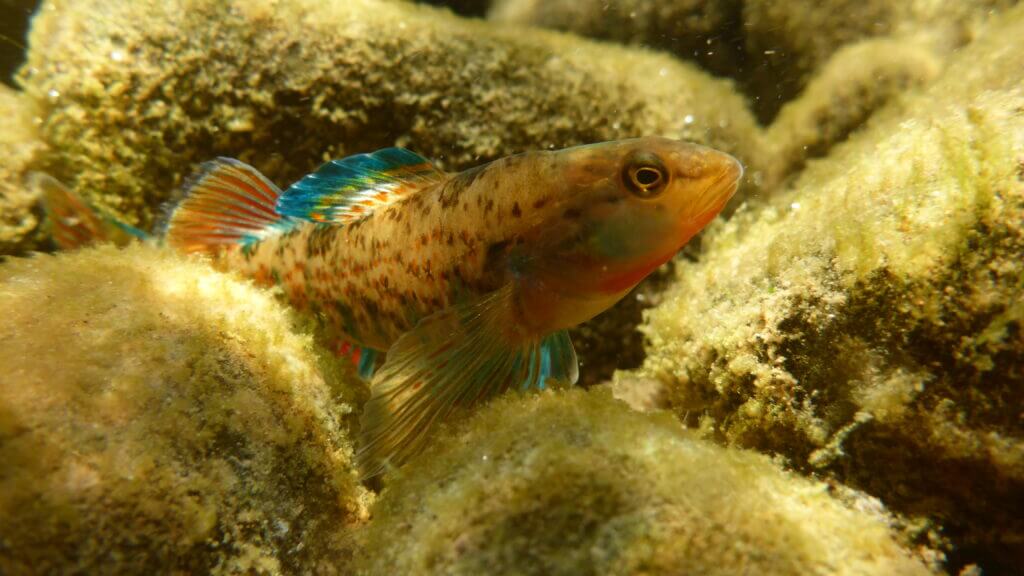
Photographed by Chad Landress
Also like hiking, snorkeling is an inexpensive activity. “I started with just a mask and a snorkel, and, in many cases, that’s all you need,” he says. He makes sure participants know this isn’t scuba diving—no oxygen tanks or diving certifications are necessary. “You’ll be breathing with your face underwater and the tube out of the water.” In addition to masks and snorkels, participants in the public events are provided with wet suits and water shoes.
For those who want to gear up for themselves, a simple mask and snorkel setup can be found for roughly $30 at local sporting goods departments or online. A wet suit is not a necessity but can provide a warmer experience in the water and protect knees against scrapes. Water shoes provide extra grip and coverage for feet. Other optional equipment includes neoprene gloves, which keep your hands warm and allow you to pull yourself along the river rocks more easily; a waterproof camera to capture images and videos of aquatic life; and underwater flashlights, which can spotlight hidden critters.
Connecting with Nature
Snorkeling is suitable for anyone with adequate swimming ability. “I’ve worked with people from ages 3 to 83,” Landress says. “If you’re younger, you’re just going to need help in the water. If you’re older, it’s low-impact once you’re in the water, so it’s easy on the joints.”
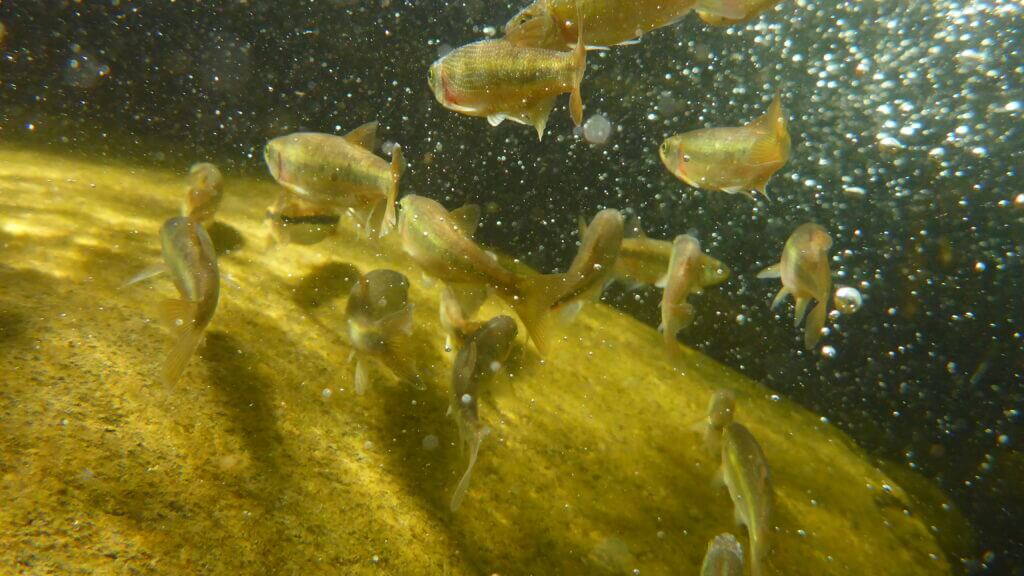
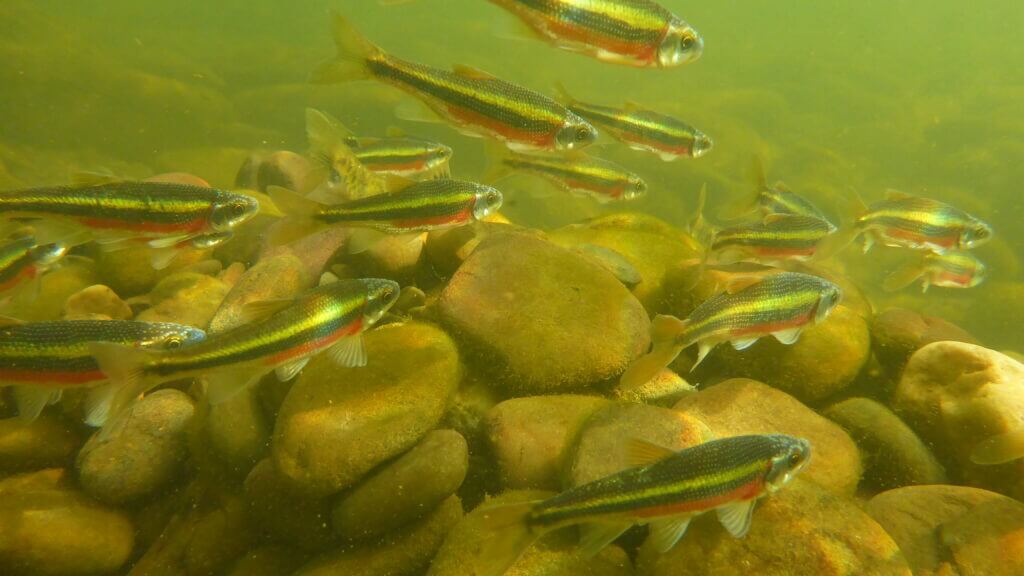
For folks who are unfamiliar with river snorkeling or who have any reservations about the activity, Landress suggests they participate in a guided event. But anyone who’s comfortable is encouraged to pick their own adventure. “There are lots of safe sites, but what you’re looking for is clean, clear water with easy access points in and out. Avoid areas with strong currents, and use the waterways at your own risk, just like hiking trails.” Shallow water is safest, especially for beginners and kids, and has its own charms. “There are darters and other really colorful fish in the shallows,” Landress shares. “If you’re a stronger swimmer, you can go into deeper water. That’s where you’ll find bigger trout and bass.”
“Enter downstream of where you want to snorkel,” Landress says. “You can hold on to rocks, and your feet will flow downstream. Depending on depth and current, you may be able to swim or army crawl.” If you don’t see any wildlife, look behind you—as the river bottom is disturbed, fish search for insects in the mix.

Image Courtesy of Freshwaters Illustrated
For some, snorkeling can be like meditation. Participants focus on their breathing while watching the water flow over the river rocks and seeing the sunlight dance on the bottom of the river. Curious fish may stop by to say hello to kind, passive observers. “Allow the ecosystem to unfold in front of you,” Landress says. “Just relax. They’ll come out from their hiding places and start behaving naturally.”
Be a good steward of the habitats you visit, leaving rocks and logs in place. And you’ll get a better viewing experience if you limit kicking or altering the streambed, allowing sediment to remain at the bottom of the river.
Since the inception of the Forest Service’s snorkeling program, Landress has considered the bigger picture—making connections between fun outdoor activities and the resource that makes it all possible: clean water. The message resonates with in-state residents who are accustomed to clear rivers as well as with out-of-state visitors who may not be so fortunate. “As public land managers, we want to protect resources so people can keep enjoying them. There’s a really strong connection between rivers and the people who live along those rivers, no matter where you are.”
To learn more about snorkeling and upcoming events, follow @monongahelanf on Facebook or visit News & Events at fs.usda.gov/mnf.

